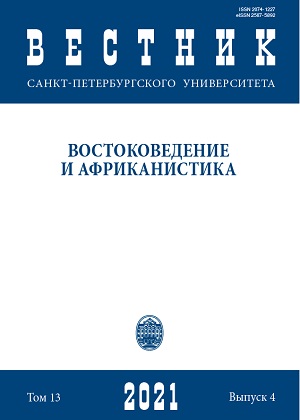Alphabets in the History of the Chinese Language
Abstract
Various phonographic variants of script, both for Chinese and for the neighboring languages using Chinese characters, had been created long before contacts with the West and the appearance of any Romanization systems in the region. Two official alphabets, the ʼPhags-pa and the Yìsītìfēi (Istīfā) scripts, and likely the nonofficial Arabographic Xi ˇа ojī ng writing system were introduced for the Chinese language already in the period of the Mongol Yuan dynasty. A syllabic character-based ‘women’s script’ Nǚshū was invented for the Southern Hunan Tǔhuà dialects at the turn of the Ming period or evidently much earlier. Modern information technologies and the possibilities of computer typesetting, in particular, have inevitably changed even the official character texts written in Standard Chinese. To a greater extent, these changes are known to have affected the language of the computer-mediated communication with its often unusual forms of Latin spelling for Chinese words. In many cases, however, Chinese Internet users and primarily speakers of various dialects prefer to use even for the all-China lexicon not only Latin variants, but also phonetically borrowed characters. Thus, they follow the centuries-old traditions of nonofficial texts including those in the medieval Báihuà vernacular language with its numerous phonetically or semantically borrowed characters from official Literary Chinese.
Keywords:
Chinese language, Chinese dialects, Chinese alphabets, Nǚshū, ʼPhags-pa script, Yìsītìfēi (Istīfā) script, Xiǎojīng (Xiǎoérjīng) script, Internet language
Downloads
References
Downloads
Published
How to Cite
Issue
Section
License
Articles of "Vestnik of Saint Petersburg University. Asian and African Studies" are open access distributed under the terms of the License Agreement with Saint Petersburg State University, which permits to the authors unrestricted distribution and self-archiving free of charge.





